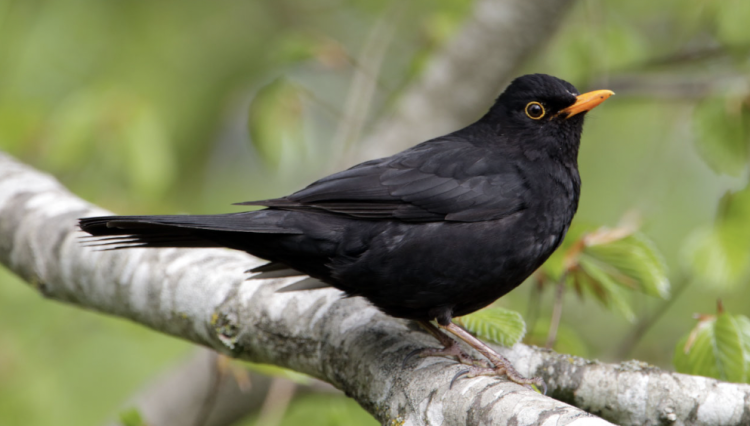Introduction: Nurturing Bonds with Nature
In the peaceful embrace of nature, the blackbird, with its timid disposition, captivates the hearts of many enthusiasts. For those who choose to nurture these delicate creatures from a young age, the question often arises: how long does it take for blackbirds to feel comfortable around humans? The answer lies in patience, care, and understanding their unique needs. This article delves into the essentials of raising blackbirds, focusing on their bonding process and environmental requirements.
Building Trust: The First Month Matters
When raising a blackbird that is still in the nestling stage, typically around 10 days old, it’s crucial to establish a connection during the first month. During this time, consistent feedings are vital. Be present when the blackbird becomes hungry, offering it food promptly. Early training for the bird to self-feed should be avoided, as this can diminish its reliance on you and delay the bonding process. By fostering this reliance and companionship, the blackbird can begin to trust you within one to two months of care.
Patience in Training: The Three-Year Journey
Blackbirds, known for their sensitive nature, may take up to three years to become fully acclimated and develop a beautiful song. This lengthy process reflects their gradual maturation and personality. When nurturing an older wild blackbird, the challenge intensifies; the transition from a wild to a tame state often requires a year or more of diligent care. Maintaining daily feedings and allowing frequent time outside the cage enhances their comfort level, encouraging them to forge a bond with their caretaker.
Understanding Their Habitat: A Home in the Wild
1. Habitat Preferences
Blackbirds thrive in diverse forest environments, ranging from secondary forests to mixed coniferous and deciduous woodlands. They are often found at elevations from several hundred meters up to 4,500 meters. Their habitat often includes forest edges, clearings, agricultural plots, orchards, and suburban areas. This variety allows them to adapt to various settings while providing the necessary spaces for foraging and nesting.

2. Foraging Habits
These remarkable birds are commonly observed foraging in small groups, often scavenging around waste areas or even near restrooms. Their presence is marked by quick, high-pitched calls and an impressive ability to mimic the songs of other birds. Blackbirds primarily feast on insects, including caterpillars, beetles, and grasshoppers, while also enjoying seeds from various plants. Such dietary habits are crucial in understanding their care needs in captivity.
Nurturing Wild Blackbirds: The Care Process
1. Initial Approach
Upon bringing a wild blackbird home, place it in a quiet environment away from disturbances. Allow the bird to acclimate for a day or two without excessive interaction. This period is essential for it to adjust to its new surroundings, providing a calming and secure atmosphere.
2. Gradual Introduction to Food
After the initial acclimation period, introduce a small amount of appropriate food, such as grains or legumes, to encourage foraging behaviors. Being omnivorous, blackbirds can thrive on a variety of foods suitable for poultry. Allowing the bird to become familiar with your presence and scent facilitates trust-building.
3. Encouraging Interaction
Over the next week or two, engage with your blackbird by offering treats directly from your hand. This interaction not only strengthens your bond but also helps the bird become comfortable with human presence. Gently introducing it to the household environment will further aid in its acclimatization.
4. Socializing and Vocal Training
As the blackbird grows more at ease, consider introducing it to other birds or environments to stimulate its vocal development. Visiting parks or connecting with other bird enthusiasts can provide valuable exposure for your blackbird, enhancing its social skills and song repertoire.
Conclusion: A Journey of Patience and Connection
Raising a blackbird can be a deeply rewarding experience, albeit one that requires time and dedication. Understanding their needs and fostering trust is essential for their comfort and well-being. With love and patience, the initial fears give way to a harmonious companionship, enriching the lives of both caretaker and bird.























































